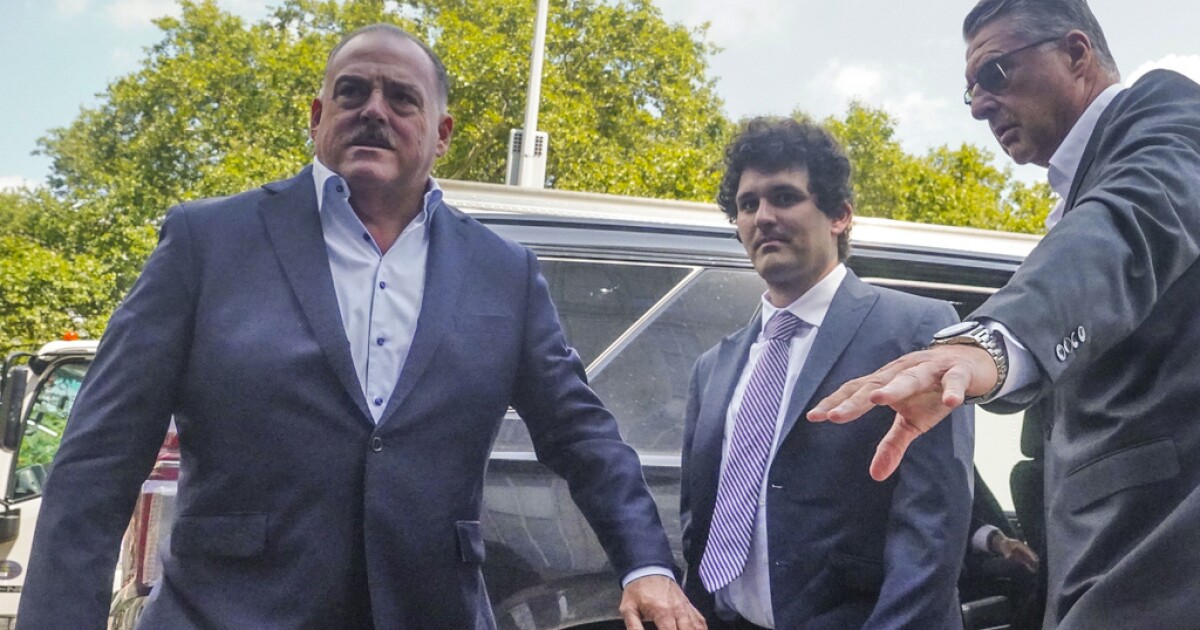

The third week of the high-profile criminal trial of FTX founder Sam Bankman-Fried included a request for more Adderall, damning testimony from one of his closest confidants, and a trove of messages on the encrypted app Signal, which seemed to show Bankman-Fried and his inner circle knew they were in financial free fall but continued to dupe customers and investors into believing they were solvent.
The messages between Bankman-Fried; Caroline Ellison, his former girlfriend and ex-CEO of Alameda Research; and FTX co-founders Nishad Singh and Gary Wang gave jurors a rare look into the casual communication between the friends and colleagues that ended in what U.S. Attorney Damian Williams called “one of the biggest financial frauds in American history.”
BIDEN GOES DIRECTLY TO THE PUBLIC ON ISRAEL AND UKRAINE WITH OVAL OFFICE ADDRESS
Bankman-Fried and his cohorts are accused of diverting billions of dollars from client accounts for his personal use, which included making risky trades at his cryptocurrency hedge fund Alameda Research, spending sprees, and celebrity endorsement deals. He’s also accused of making illegal donations to lawmakers on Capitol Hill and their affiliated political action committees as part of a plan to buy power and influence crypto regulation.
Bankman-Fried has pleaded not guilty to two counts of fraud and five counts of conspiracy tied to FTX’s 2022 implosion. If convicted of all the charges against him, the 31-year-old could be sentenced to more than 100 years in prison.
Multiple members of his inner circle have already pleaded guilty to similar charges and have been paraded to the witness stand by prosecutors. Each has testified that Bankman-Fried was calling the shots at the hedge fund and the cryptocurrency exchange when both imploded last year, sending shock waves through the crypto community.
The trial is expected to wrap up before Thanksgiving.
Here’s a look at what happened during week three:
Adderall
Bankman-Fried’s defense attorney Mark Cohen started off the week by sending a letter to the judge and asking for a higher dose of Adderall so his client could stay focused.
Cohen added that whether Bankman-Fried takes the stand in his own defense would be directly related to getting additional doses of the prescription drug that helps people with attention-deficit/hyperactivity disorder.
Bankman-Fried gets a morning and night dose to treat his ADHD, but Cohen argued the medicine wears off by the time the trial day starts, leaving Bankman-Fried unfocused and fidgety.
“[Bankman-Fried] has been doing his best to remain focused during the trial for the past two weeks, despite not having his prescribed dose of Adderall during trial hours,” Cohen wrote. “However, as we approach the defense case and the critical decision of whether Mr. Bankman-Fried will testify, the defense has a growing concern that because of Mr. Bankman-Fried’s lack of access to Adderall, he has not been able to concentrate at the level he ordinarily would and that he will not be able to meaningfully participate in the presentation of the defense case.”
There has been no response to the letter.
Nishad Singh
Singh, a former executive at FTX, testified this week that Bankman-Fried knowingly siphoned billions of dollars in customer funds to go on spending sprees and ink endorsement deals with celebrities and sports stars such as Super Bowl champion Tom Brady and four-time NBA champion Stephen Curry.
Singh, who was classmates and close friends with Bankman-Fried’s younger brother Gabriel, told jurors he had had “a lot of admiration and respect” for Bankman-Fried but that it “eroded” over time.
He added that he, Bankman-Fried, and other FTX and Alameda Research executives, including Wang, Ryan Salame, and Ellison, had knowingly defrauded customers and investors.
Singh, the former head of engineering at FTX, is the latest person in Bankman-Fried’s tightknit circle of friends to testify against him. Prosecutors alleged that Bankman-Fried told Singh and Wang to create the computer code that would allow Alameda, the crypto hedge fund Bankman-Fried owned, to borrow vast sums of money from FTX customers.
Singh has already pleaded guilty to fraud and conspiracy and agreed to cooperate with prosecutors.
“Sam is a formidable character, brilliant,” Singh said from the witness stand. “So I had a lot of admiration and respect for him. Over time, a lot of that eroded.”
Signal messages and recorded meetings
Prosecutors this week provided a series of damning messages on the Signal app between Bankman-Fried, Ellison, Wang, Singh, and Salame that perhaps paints the clearest picture of what went down at the two companies and when.
One thread shown to jurors was posted by Bankman-Fried on Nov. 7, 2022, at 3:47 a.m., the day FTX announced a liquidity problem and started looking for money to plug a multibillion-dollar hole in its balance sheet. While scrambling to save face publicly and assure customers that FTX is “fine” in tweets and on other social media platforms, Bankman-Fried and his other top lieutenants were freaking out behind the scenes.
In a group chat, he listed a “to-do” list, which included halting withdrawals, sending a “confident tweet thread,” and reaching out to cryptocurrency firms such as Sequoia, Apollo, and Silver Lake to try and get some cash.
In another exchange later that day, Bankman-Fried claimed that one way to give FTX customers false hope would be to tell them they would get free tokens if they kept their funds on the platform.
Around this time, Ellison, who has been painted by defense attorneys as being woefully bad at her job, began asking people on the group chat for guidance on how to handle an all-hands Alameda meeting. She suggested telling her roughly 30 or so employees that “Alameda is probably going to wind down,” adding that there would be no pressure for staffers to stay but that it would be “super appreciated” if they would help with “stuff like making sure our lenders get paid.”
Bankman-Fried, allegedly knowing there was no way to dig Alameda out of its financial mess, suggested Ellison put a more positive spin on it and say something about there “being a future of some sort for those who are excited” about staying.
Ellison didn’t heed his advice, and in a disastrous staff meeting that was secretly recorded and played in court by prosecutors, she told her staff the unvarnished truth.
CLICK HERE FOR MORE FROM THE WASHINGTON EXAMINER
“Alameda borrowed a bunch of money,” which it used to make investments, she said, adding that as crypto prices fell, “FTX had a shortfall of user funds” and then “users started withdrawing their funds” and they “realized they would not be able to continue.”
When she was asked by a staffer whose idea it was to plug Alameda’s loan losses with FTX customer money, she giggled, “Um, Sam, I guess.”





